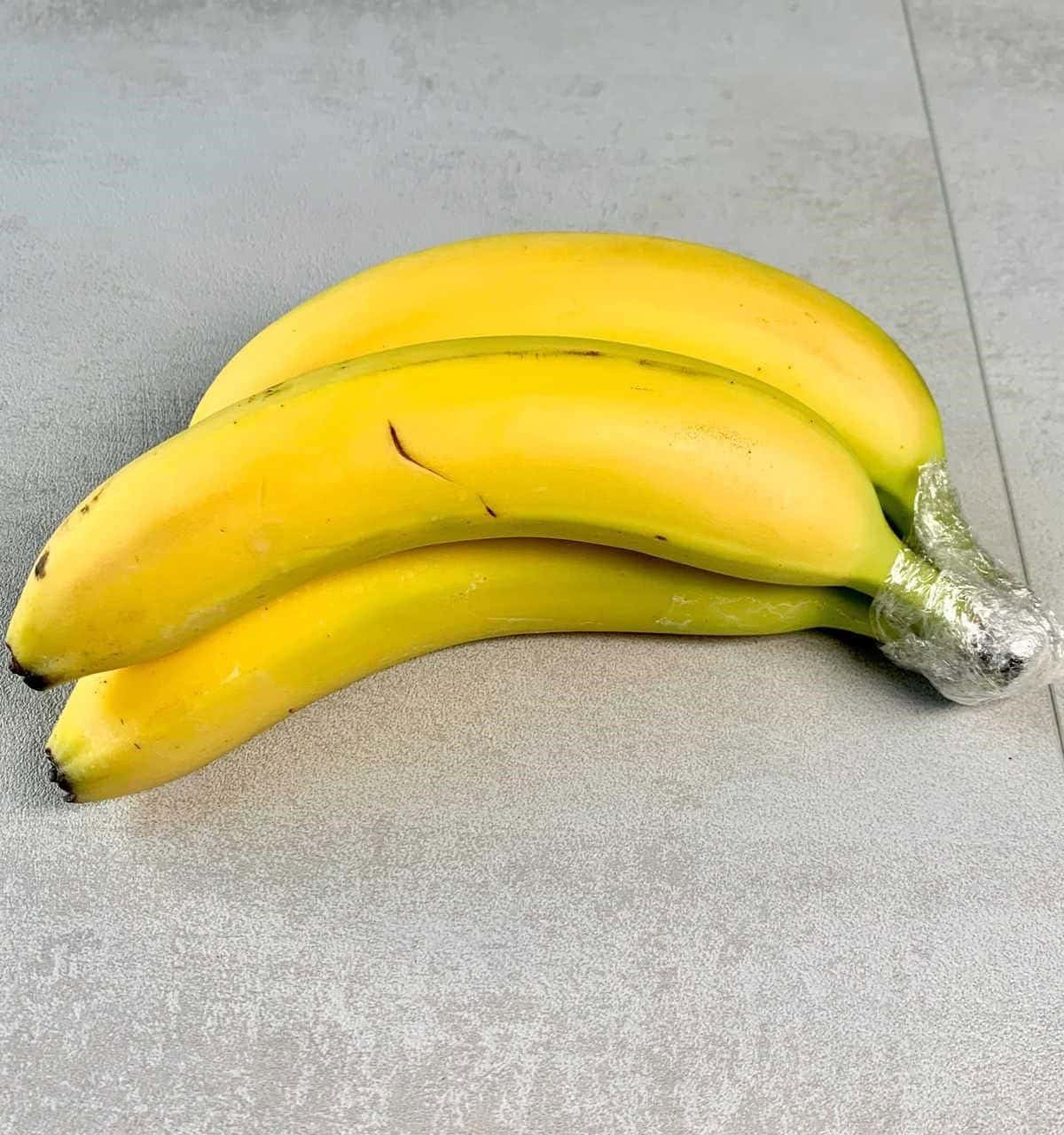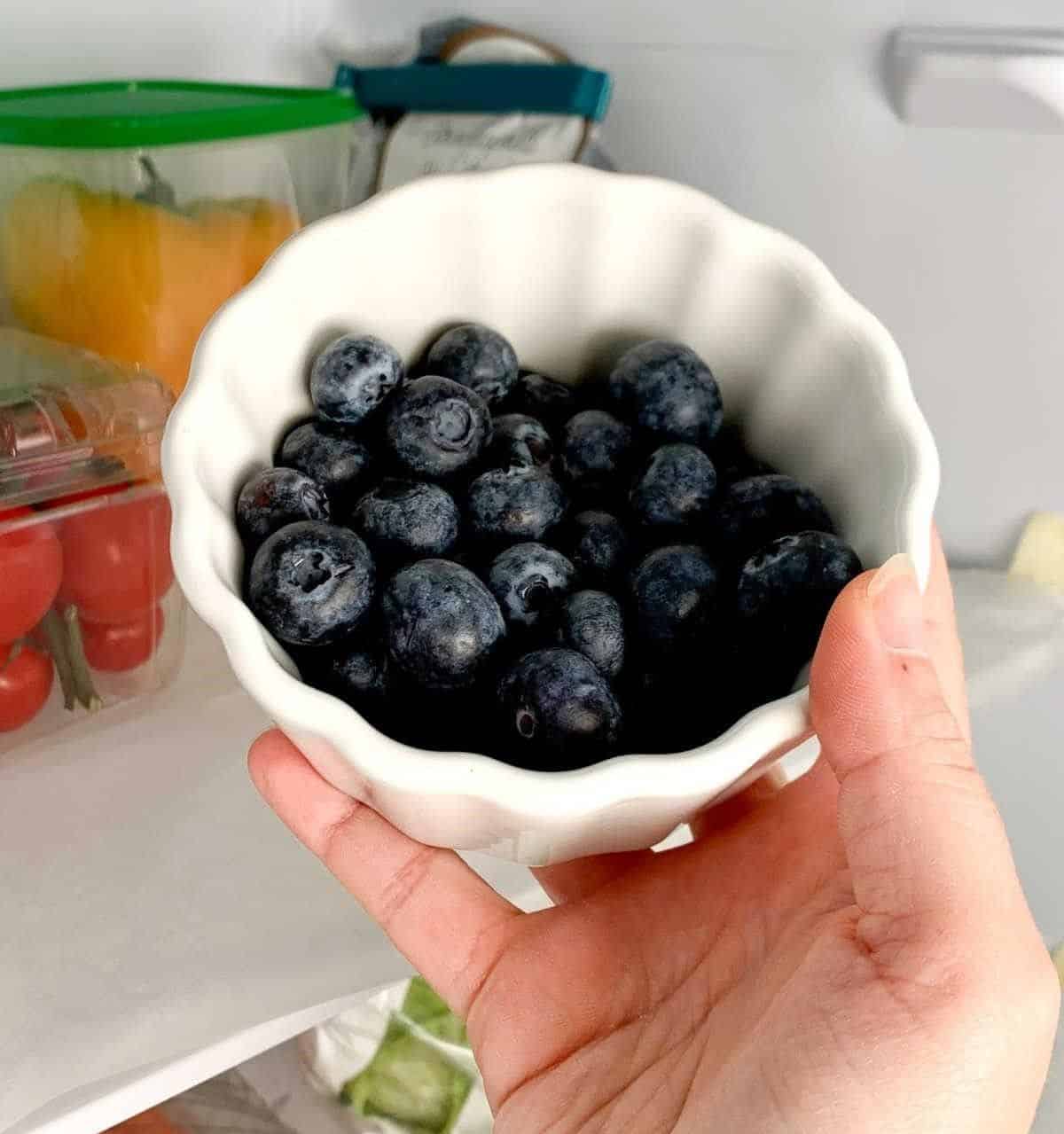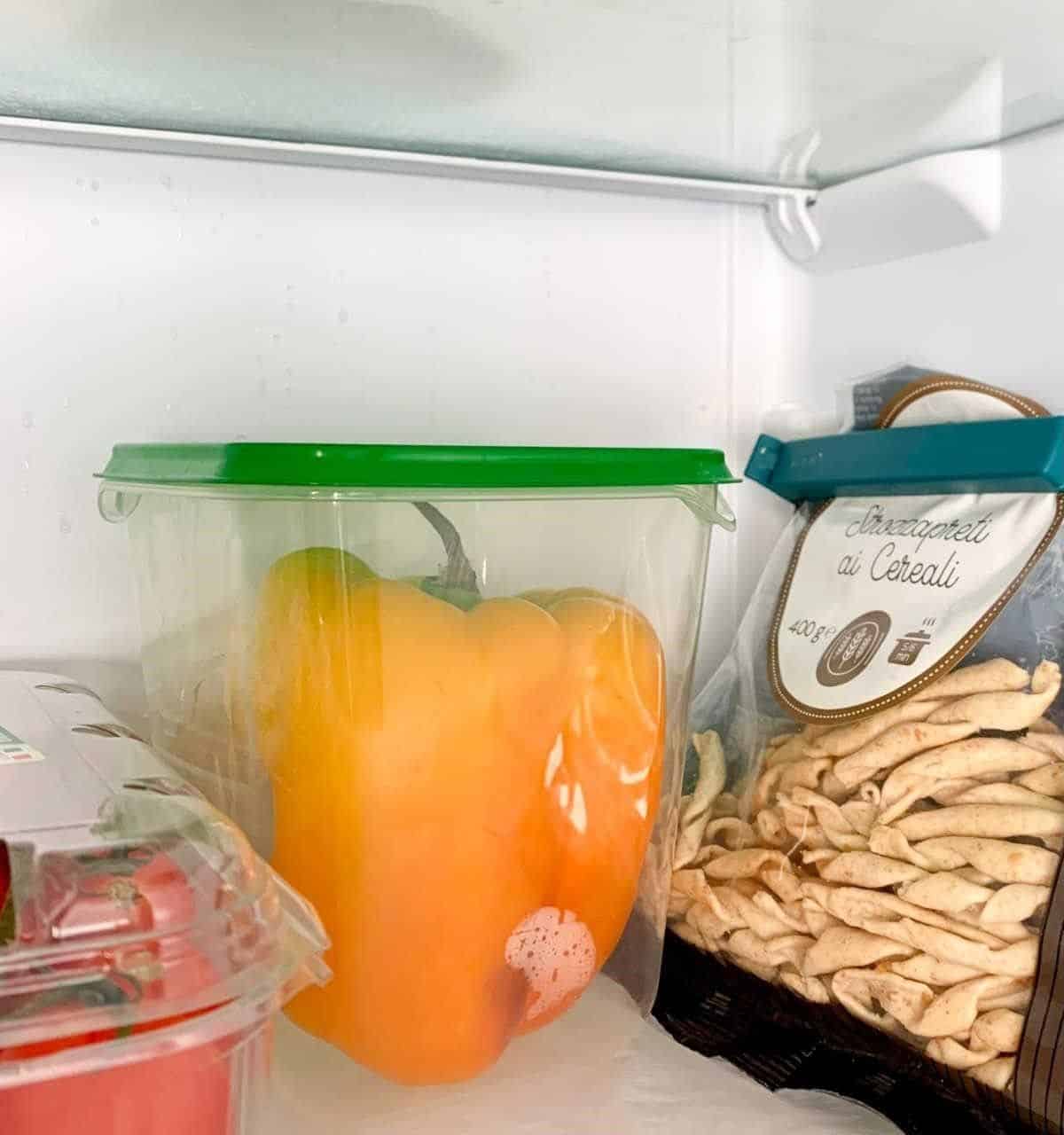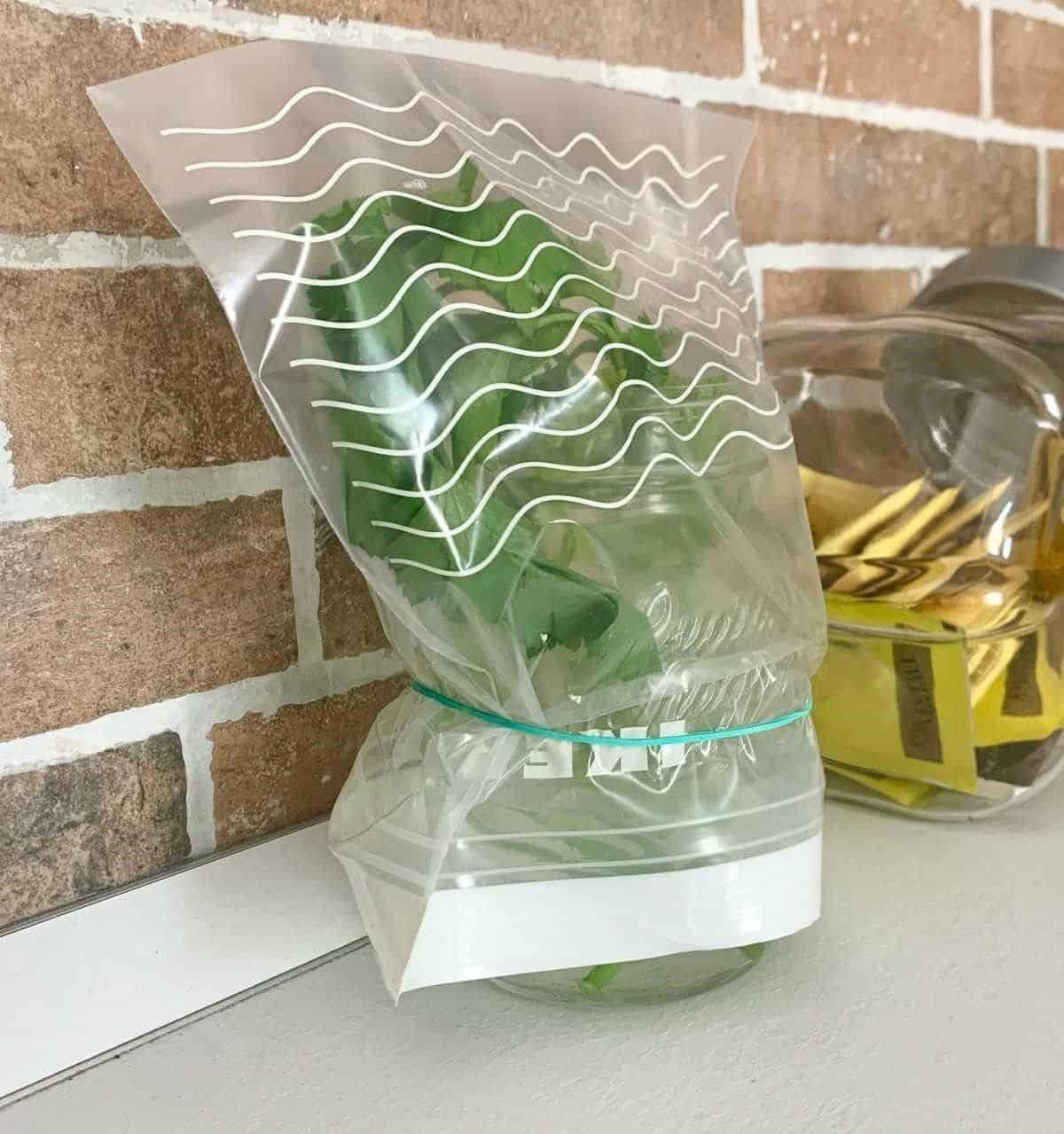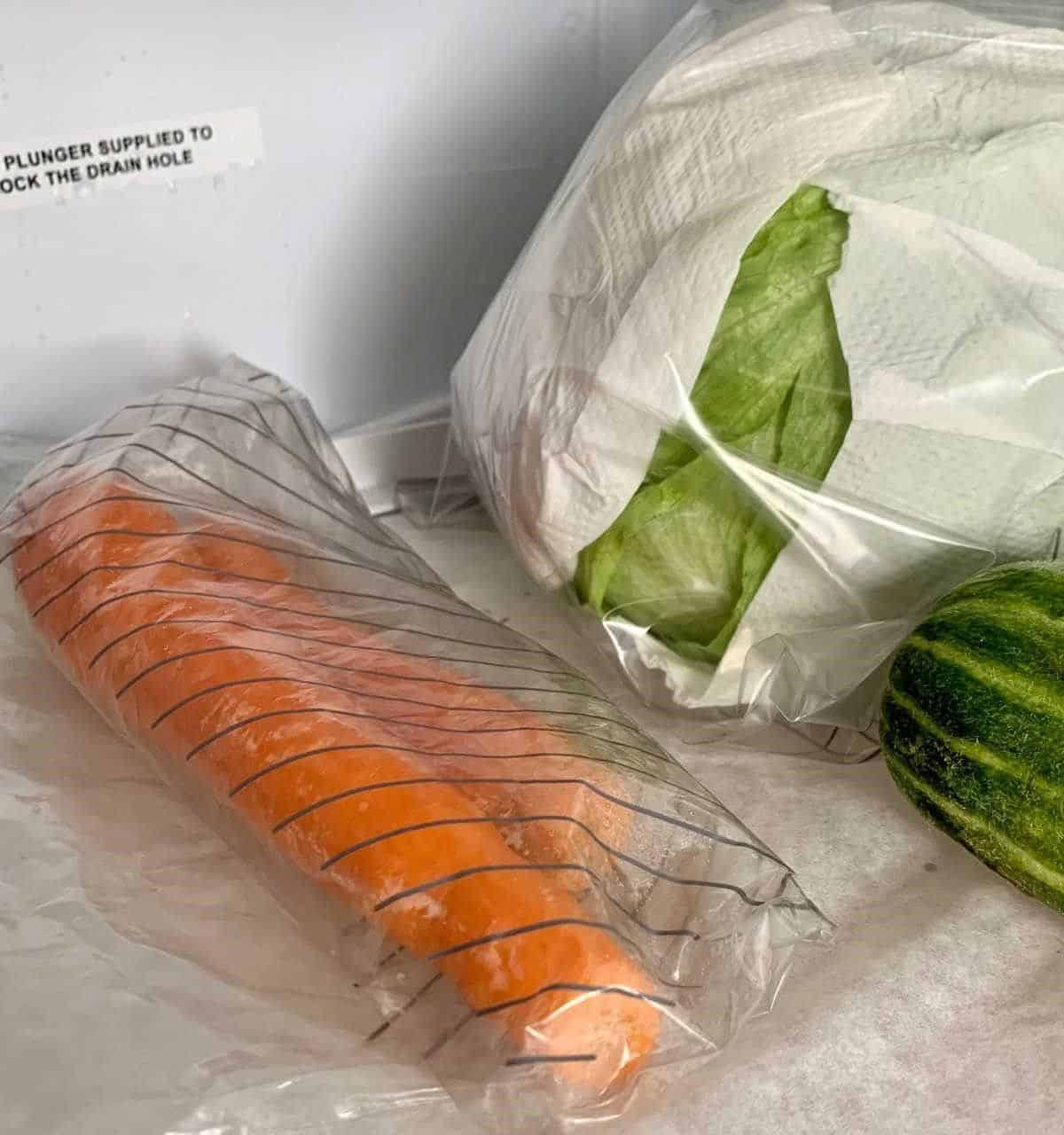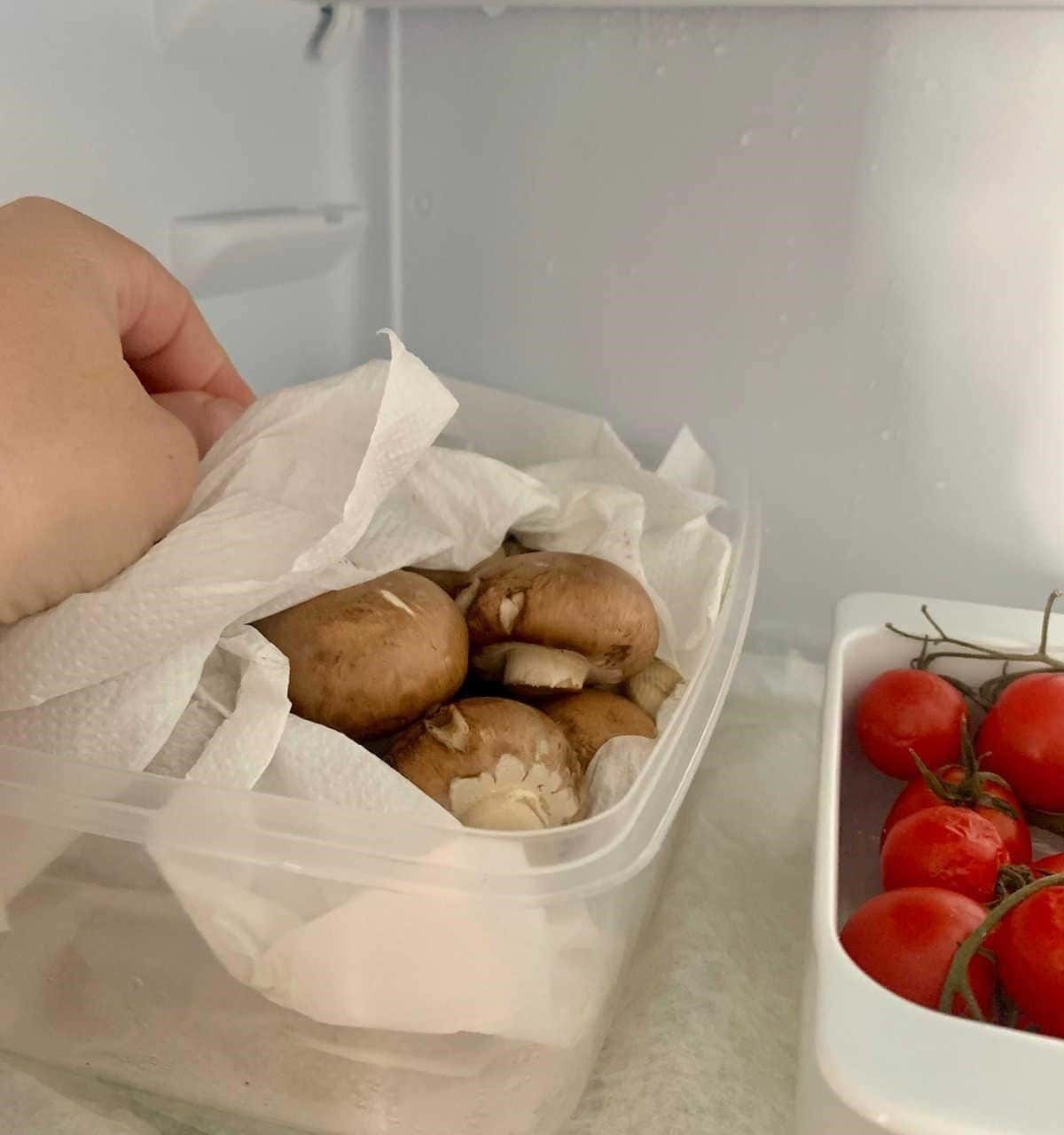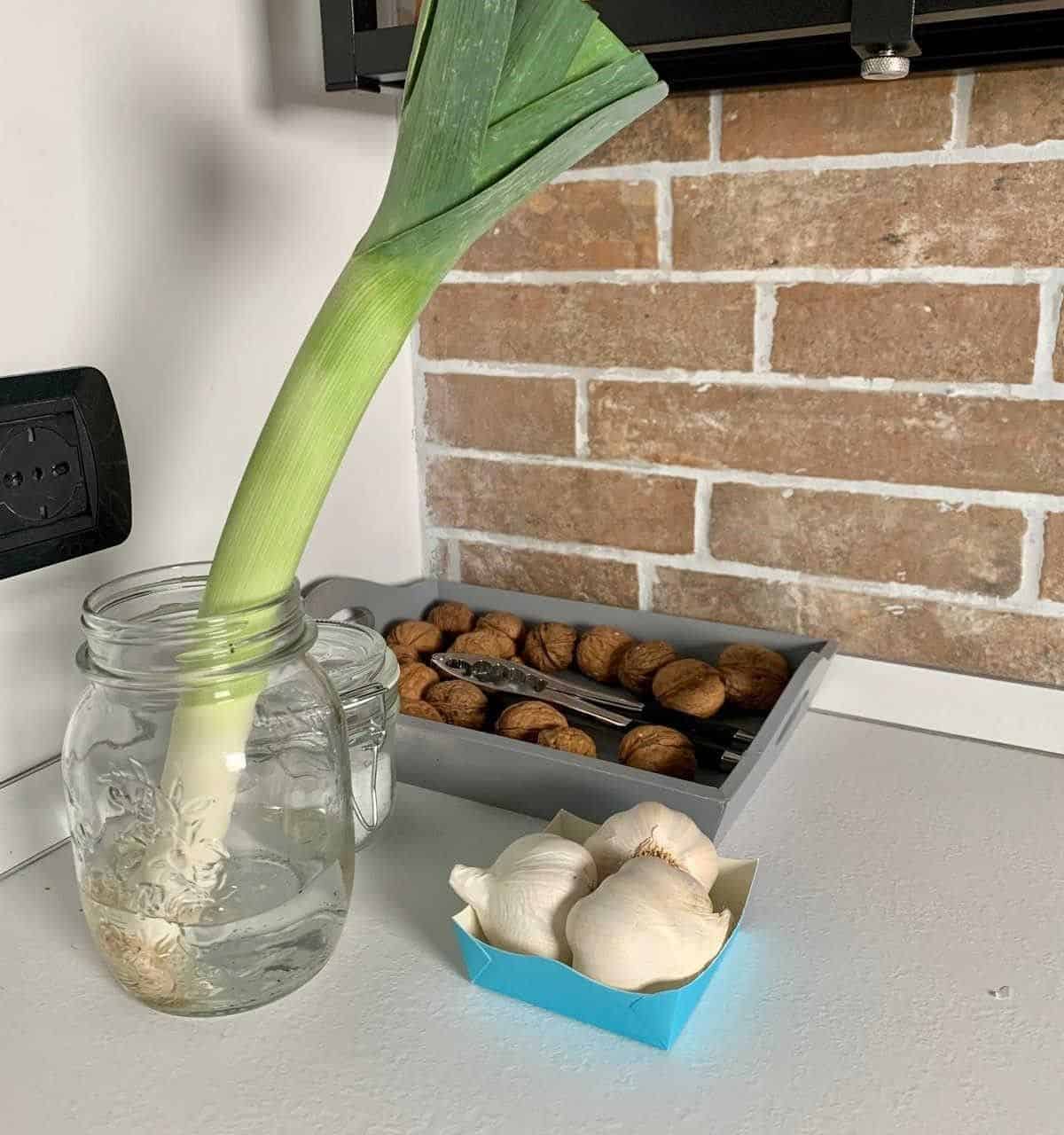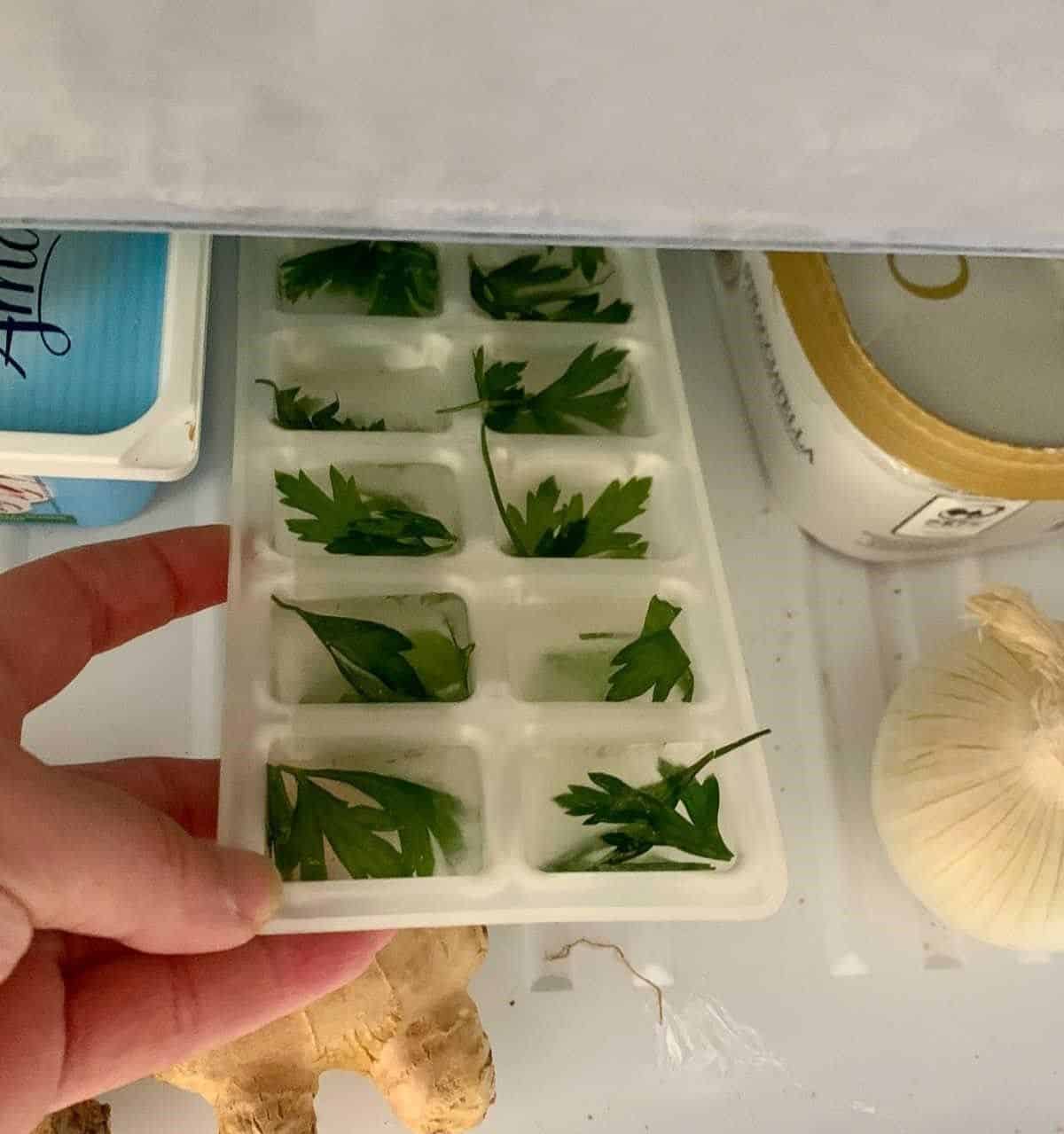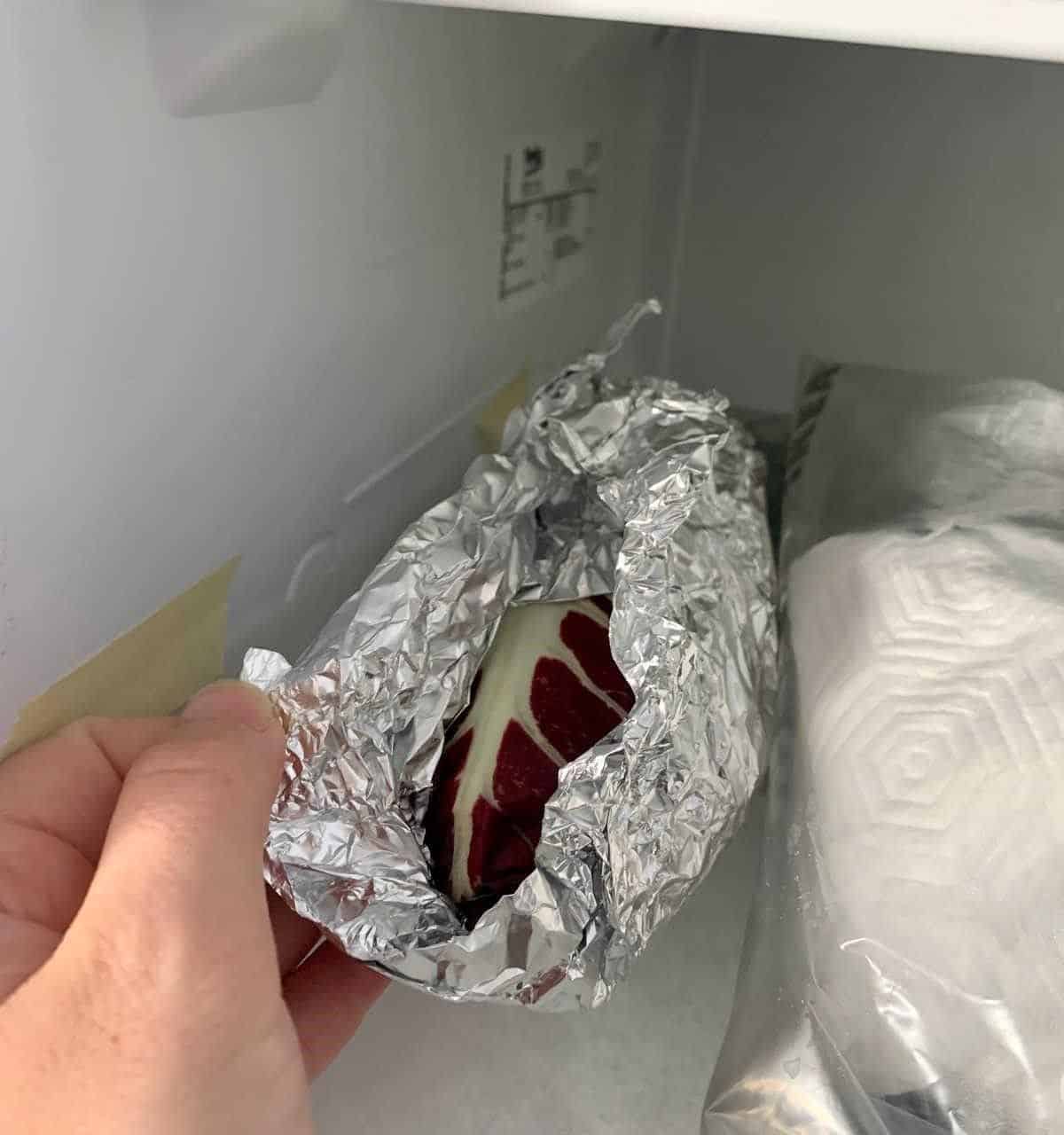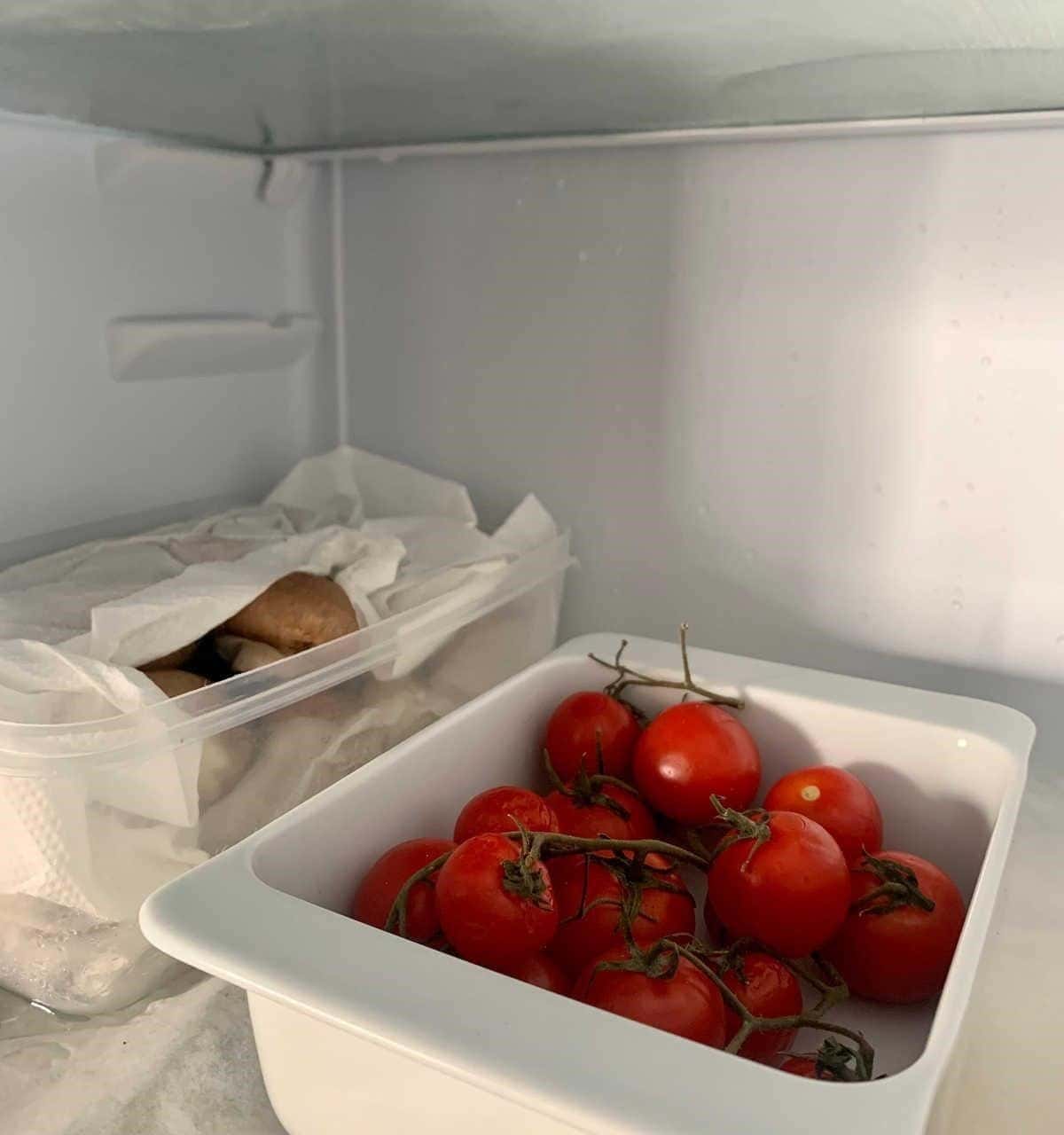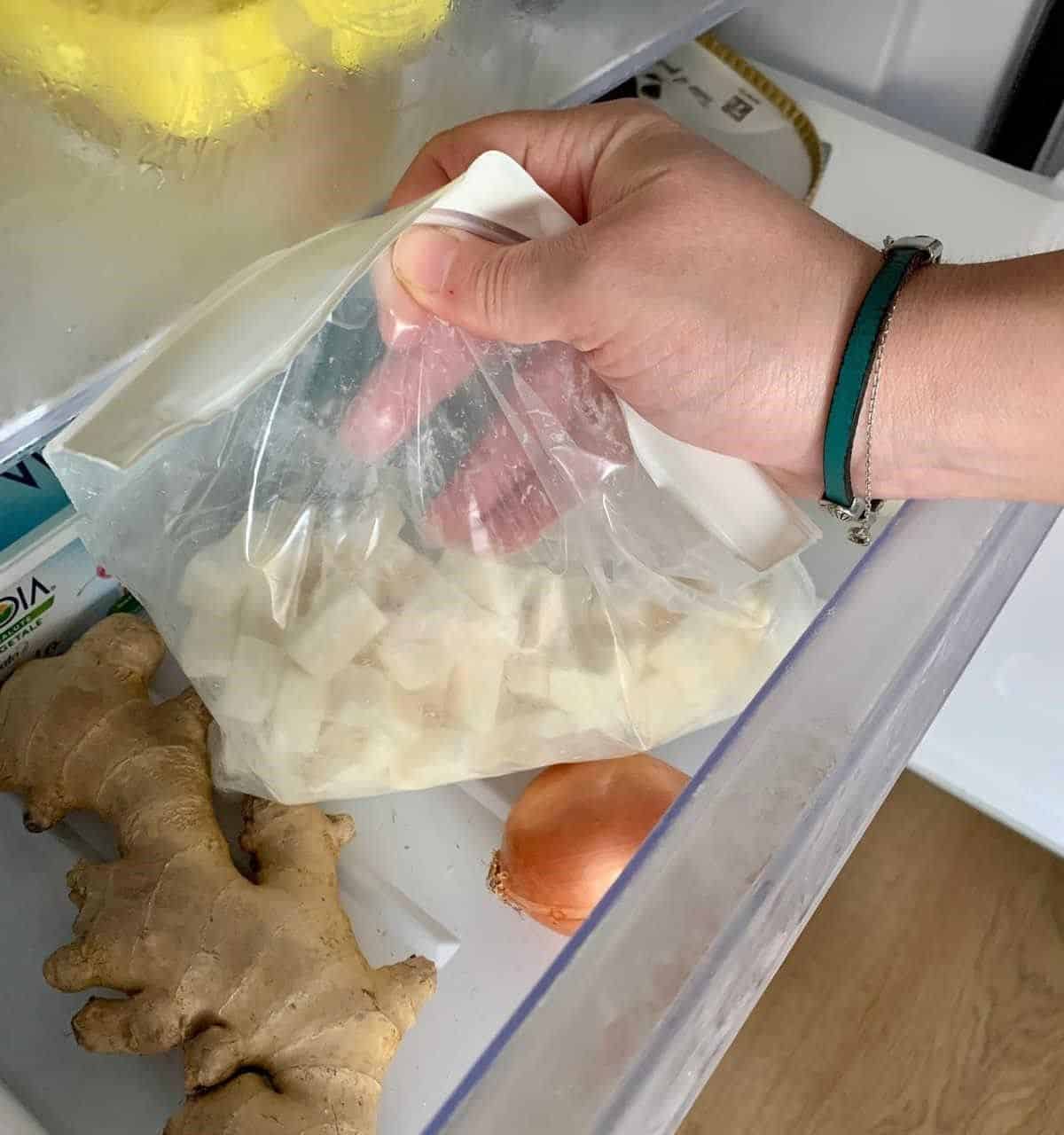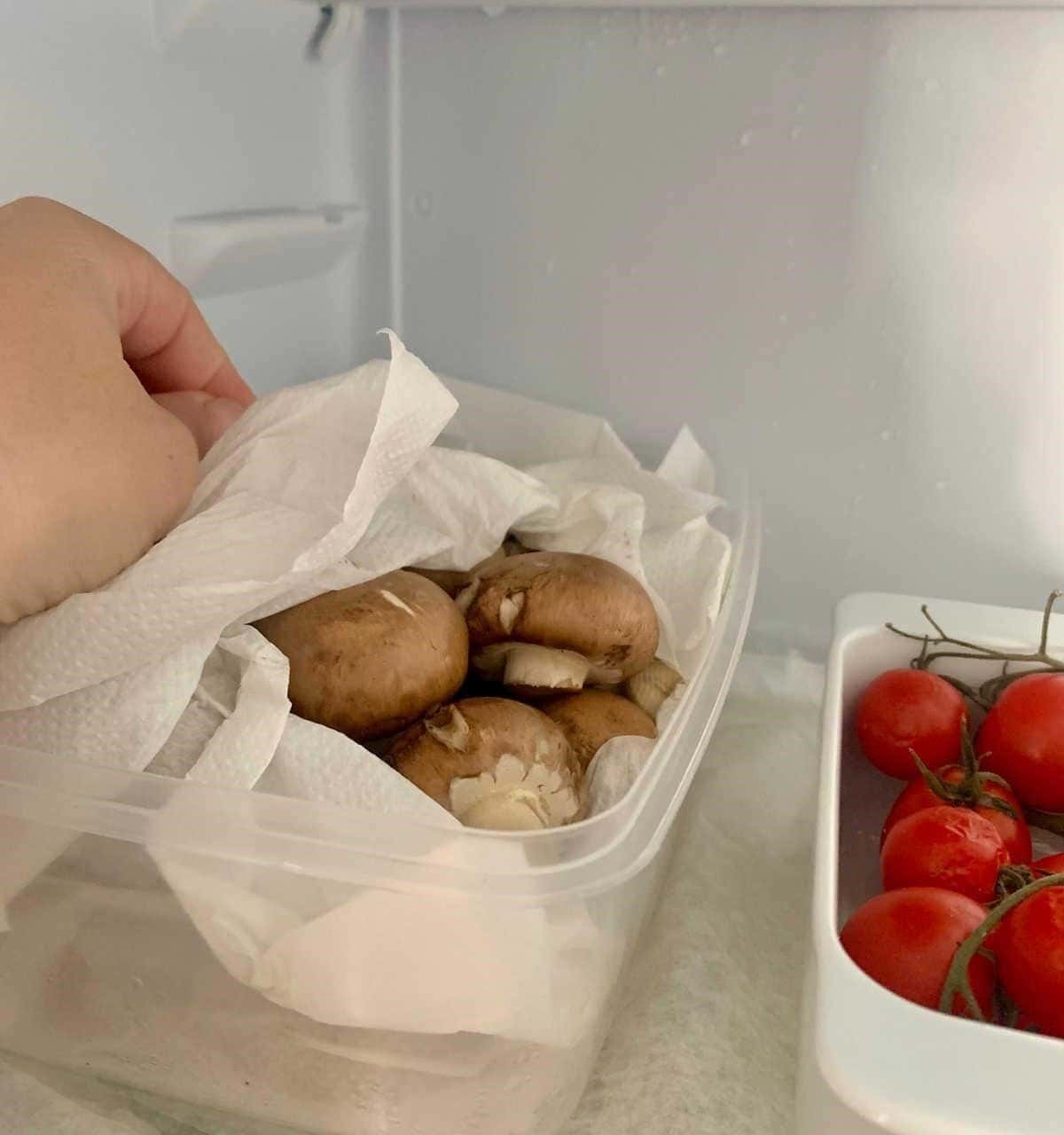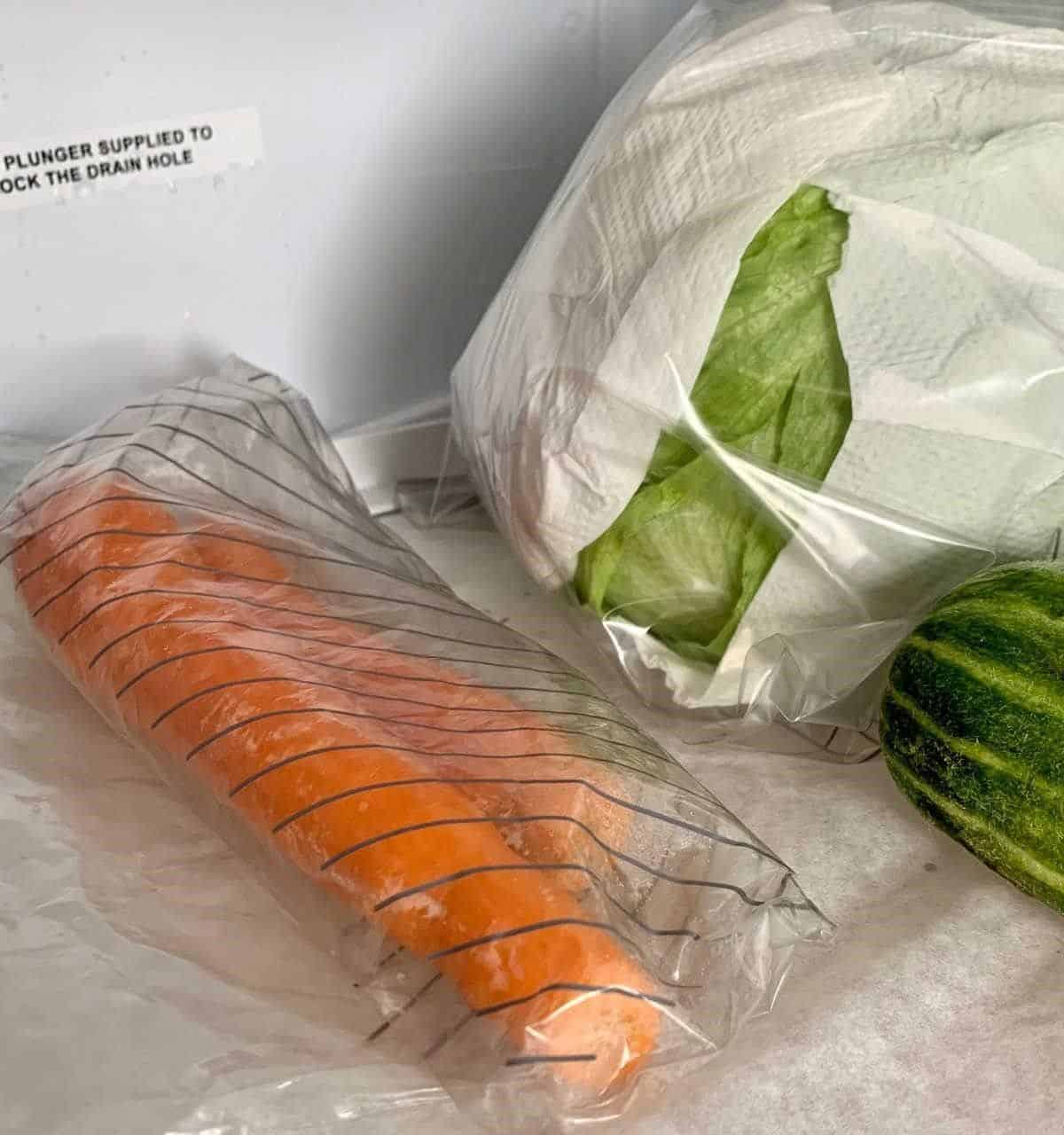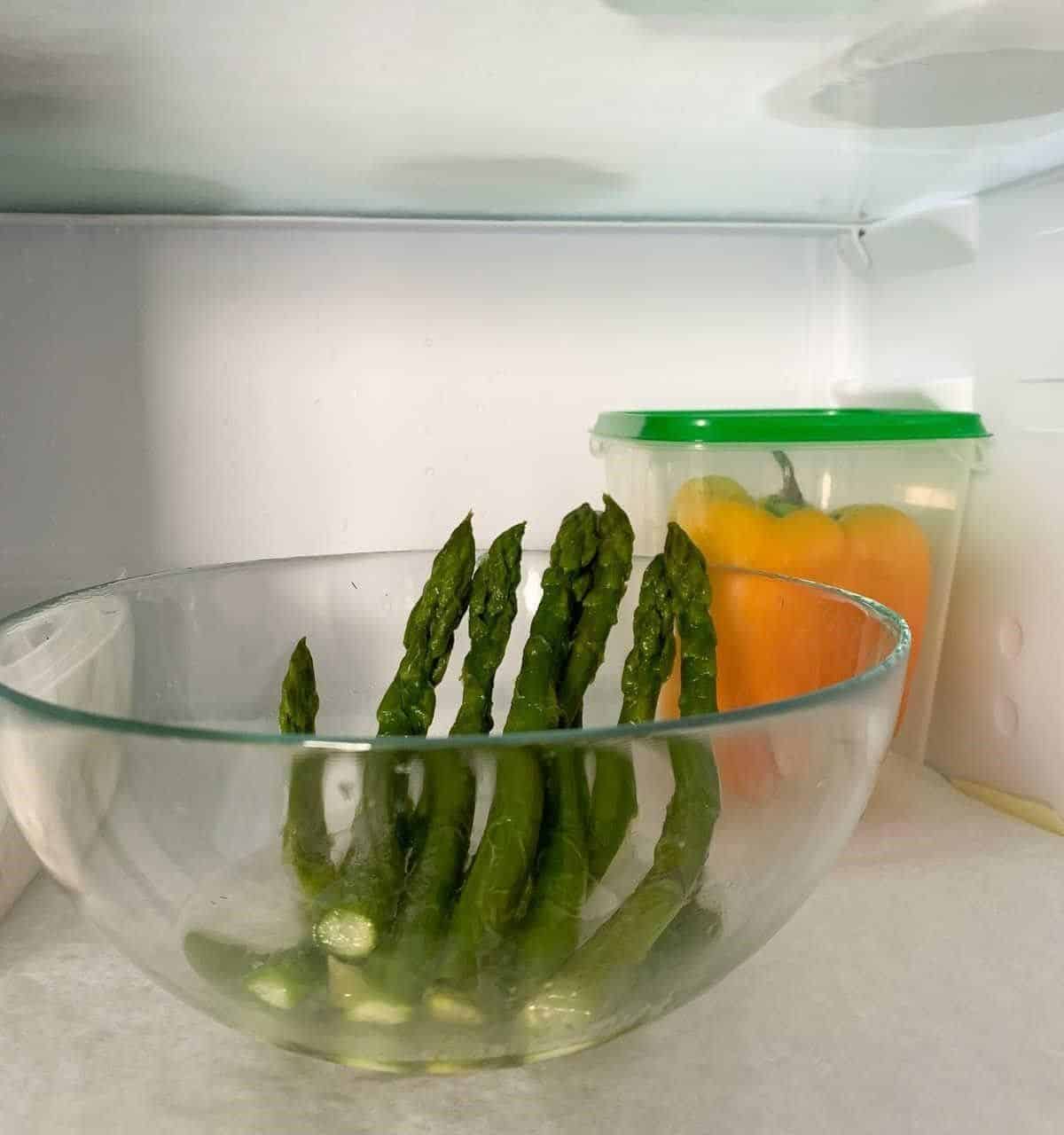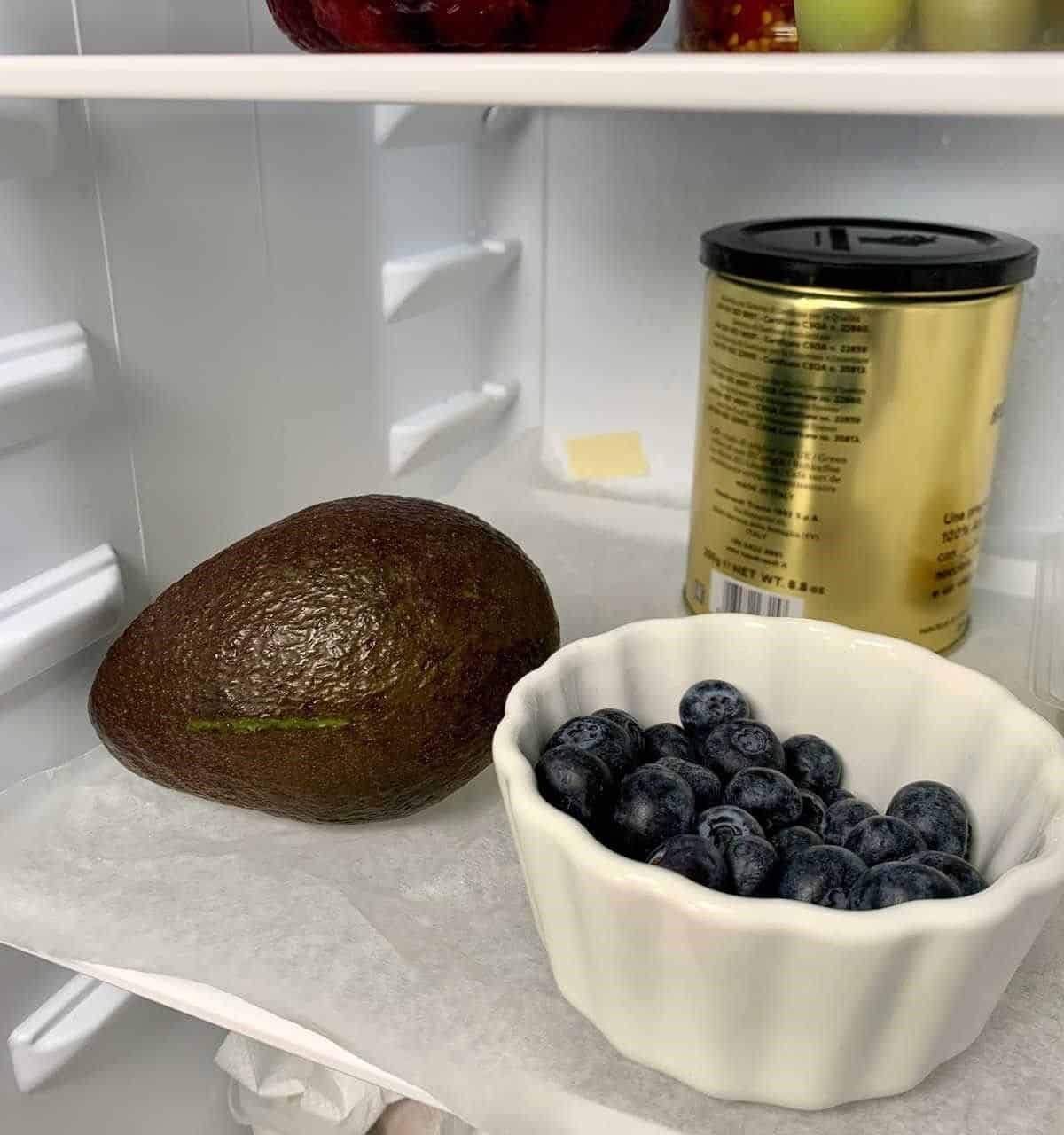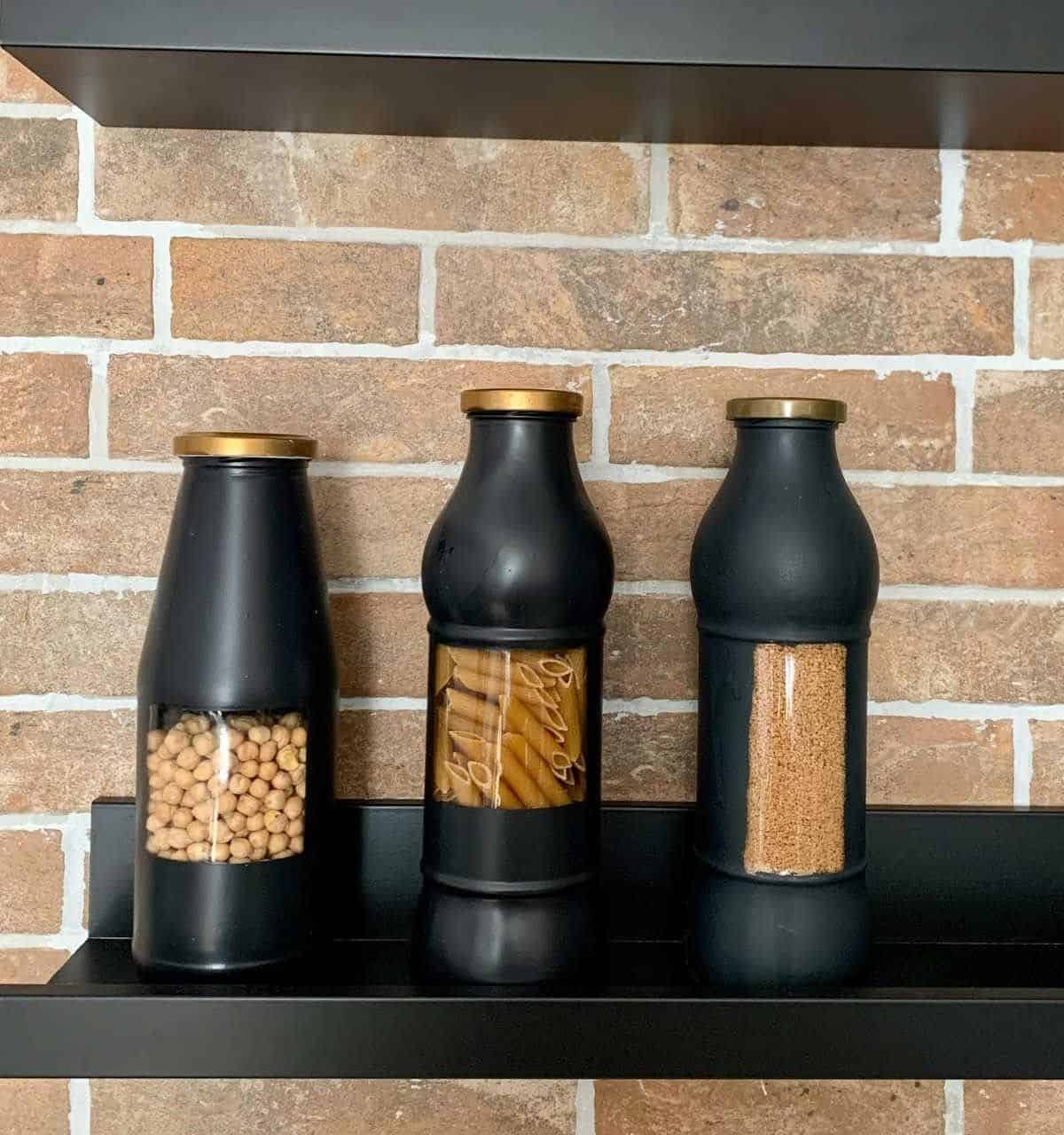When it comes to keeping groceries fresh for a longer period, I’m always on the lookout for new tips and techniques. To help me achieve this, I’ve compiled a list of my top methods for storing various food groups – from fruits and veggies to dairy products and grains. As someone who’s passionate about learning more about food storage, I’ve even had conversations with my local grocers to get their insights on the best practices.
In this post, you’ll find some of my favorite hacks that have helped me keep my groceries fresh for longer. And, as always, I’d love to hear from you – what are your go-to methods for storing food? Share your favorite tips and tricks with me and let’s get a conversation started!
Watch: 20 Genius Food Storage Hacks!
Prevent Bananas from Ripening
To extend the shelf life of your bananas, consider employing a simple yet effective technique. When storing bananas, take a piece of saran wrap and gently cover the area where the stem meets the fruit itself. By doing so, you’re disrupting the natural ripening process that occurs when this region is exposed to air. This minor modification can make a significant difference, allowing your bananas to remain a vibrant yellow for a longer period.
Use a Vinegar Solution for Berries
As you prepare blueberries, strawberries, raspberries, or any other berries, don’t forget to have white vinegar at the ready. To give your fruit a thorough cleaning, combine one part vinegar with three parts water to create a solution that will help remove dirt and debris. Allow your berries to soak in this mixture for a bit before draining the solution and rinsing them until you no longer detect any lingering vinegar scent.
Once cleaned, gently pat dry and store your fresh berries in the refrigerator to maintain their freshness.
Keep Bell Peppers in an Airtight Container
To extend the shelf life of peppers, store them whole in an airtight container. This will help maintain their natural crispness and freshness. When doing so, be mindful of any moisture that may accumulate within the container and promptly wipe it clean as needed to prevent mold or spoilage.
Store Herbs in Covered Jars with Water
When dealing with stemmed herbs that won’t be used immediately, it’s a good idea to store them in a jar of water and secure a bag overtop using a rubber band. Like cut flowers, these herbs can extend their shelf life when kept warm and moist. To ensure the best possible conditions for your herbs, monitor the water levels regularly and replace old water with fresh as needed.
Simply add enough water to cover the roots without overwhelming them – this will provide the necessary hydration without causing excessive moisture.
Wrap Lettuce in a Paper Towel
When it comes to preserving leafy greens, paper towels are often overlooked but highly effective. One of my go-to methods is to gently pat dry the lettuce leaves after an initial rinse, followed by wrapping them in a clean cloth and storing them in a sealed plastic bag – just like this one – in the refrigerator. This simple technique helps to prolong the freshness of your greens and keep them crisp for a longer period.
Keep Ginger in the Freezer
To simplify the process, one effective trick is to store your entire ginger root in the freezer without any prior preparation. This method eliminates the need for preliminary steps unless you have a preferred way of preparing your ginger. Interestingly, you can even chop or grate the frozen ginger with ease.
Pat Dry the Vegetables After Washing
The importance of drying fresh produce is a lesson I’ve learned the hard way – excessive moisture can lead to mold and other complications, both inside and outside the kitchen. In fact, it’s crucial to pat down all ingredients as soon as possible to prevent premature deterioration, ensuring that your newly purchased goods remain in top condition.
Store Leeks in Jars
Leeks, much like herbs, have the unique ability to prolong their life cycle by simply being submerged in water. In fact, with proper care, they can continue to grow even when placed in a water-filled container. To encourage this process, start by giving your leeks a thorough rinse, then submerge their roots completely in a jar of water. Be sure to change the water as needed to maintain optimal conditions for growth.
Freeze Chopped Herbs
When it comes to storing herbs in your kitchen, you have two main options: keeping them in jars or freezing them with a liquid. If you’re not fond of having jars scattered around your kitchen filled with herbs, freezing is a great alternative. You can even use the same method I demonstrated in my YouTube video, which uses water. However, if you plan on cooking with some of these frozen herbs, you may want to consider using a fat like olive oil or coconut oil instead.
Ultimately, the choice between jars and freezing depends on whether you prefer to enjoy your fresh herbs in their original state or thawed/cooked form.
Wrap Radicchio in Foil
To keep radicchio fresh for a longer period, a simple yet effective trick is to utilize tin foil. By wrapping the leaves in this material, you’ll help maintain their crispness and retain moisture, thereby extending its shelf life. Simply wash the radicchio as needed, pat it dry with a paper towel, and then wrap it snugly in a sheet of aluminum foil.
Keep Tomatoes in the Fridge
When it comes to storing tomatoes, many of us have been led to believe that they’re perfectly fine sitting outside the fridge. And while that’s generally true, I do make a habit of throwing mine in the refrigerator from time to time. For instance, if I’ve got a surplus of tomatoes and don’t plan on using them all up in one recipe, the fridge is a great place to keep them fresh for longer.
Similarly, if I bring home a tomato that’s already ripe but won’t be used that same night, the cold temperature helps slow down the ripening process. There are certainly more scenarios where having this trick up your sleeve can come in handy, but those are some of my most common situations. I’m particularly fond of using small containers like this one I picked up over the summer – it’s the perfect size for smaller tomatoes.
Just be sure to store them away from fruits like avocados, apples, and bananas, as these can actually speed up the ripening process of your tomatoes.
Freeze Shredded Cheese in Freezer Bags
One of our go-to snacking methods is to portion out a large block of cheese and prepare it for future enjoyment. To do this, we cut the cheese into smaller pieces, mix in a small amount of cornstarch to prevent the cubes from freezing together, and then store them in the freezer. When it’s time to snack, we simply retrieve the desired amount, briefly warm it up using the microwave or by placing it on top of a preheated stovetop. This method allows us to easily enjoy our cheese at any time.
Keep Mushrooms from Getting Slimy
When dealing with pesky mushrooms in the fridge, it’s crucial to tackle their sliminess head-on. To effectively combat this issue, try employing a clever hack. Start by thoroughly rinsing the mushrooms under running water, then gently pat them dry with a towel. Next, place the dried mushrooms onto another clean towel, ensuring they’re fully covered by an ample tail of fabric on either side.
Finally, transfer the mushroom-towel combination to a container, allowing the absorbent material to work its magic and help keep your fungi fresh.
Keep Your Carrots in Airtight Bags
When it comes to storing carrots, many of us are familiar with the array of shapes, sizes, and colors available at our local markets. Despite these differences, one common practice remains: storing them in a specific way. To do this effectively, start by cleaning your carrots thoroughly and then place them in a clean, dry bag. Interestingly, the residual moisture from the carrots can actually help to create a beneficial environment for their storage.
Store Your Apples Away from Other Foods
Apples are a notable fruit that release natural compounds that can accelerate the ripening process of other produce. This phenomenon is not unique to apples, as tomatoes also exhibit similar behavior. When it comes to storing apples, they can be kept at room temperature like tomatoes, but having them in the refrigerator is recommended if you have a large quantity or won’t be consuming them immediately.
In the absence of a crisper drawer, small fridge containers can provide an effective alternative for maintaining optimal storage conditions.
Store Asparagus in a Glass of Water or a Bowl
Asparagus is another vegetable that can thrive even after being picked up from the grocery store. Interestingly, only the tips of this particular vegetable require submersion in water following cleaning at home. Furthermore, when storing items with moisture, such as vegetables, it’s essential to utilise materials with slower temperature conductivity like glass or plastic. This approach helps maintain optimal storage conditions, ensuring the quality and freshness of your produce.
Store Garlic in Cardboard Boxes
When it comes to storing garlic, proper air circulation is crucial. In fact, plastic bags can be detrimental as they create a humid environment that encourages the garlic to sprout faster than expected. For optimal shelf life, I recommend keeping your garlic in well-ventilated containers or baskets that allow for airflow and prevent moisture buildup. This simple trick will help keep your garlic fresh for a longer period.
Keep Your Avocados in Fridge
By extending the preservation process, refrigeration offers a significant advantage when it comes to certain non-traditional items. In fact, avocados are a perfect example of how cold air can work wonders. When stored in the fridge, they ripen significantly slower, enjoying an additional two-to-three day shelf life. This allows for greater flexibility in planning and use, eliminating the pressure to consume them within a 24-hour window.
Simply store as many ripe avocados as needed, and enjoy the extra time to plan your meals and recipes without worrying about their freshness.
Store Dry Foods in Airtight Containers
By storing dried goods in airtight containers, you can significantly prolong their freshness. This is because these types of containers prevent air from entering and interacting with the food, which can cause staleness. By sealing the containers tightly, you also eliminate any external factors that could compromise the quality of your dried goods.
To take organization to the next level, consider adding a date label or cooking instructions directly on the container, making it easy to quickly identify what’s inside and how to use it. For more creative kitchen storage solutions, be sure to check out this clever DIY cabinet organizer.
Don’t Store Fruits and Vegetables Together
The surprising reason why your fridge contents may be expiring faster than expected lies in their placement. Only recently have I discovered the significance of this factor, and it’s a crucial aspect to consider when setting up markets or preserving food at home. Interestingly, many fruits produce ethylene gas, which is essentially a ripening hormone that triggers the ripening process.
Vegetables are particularly susceptible to this gas, causing their lifespan to dramatically shorten if they don’t already emit it themselves. With this knowledge in mind, it’s no wonder why some foods may be perishing quicker than others.


